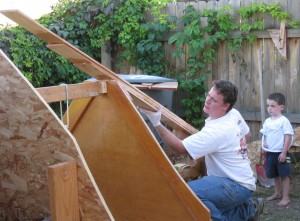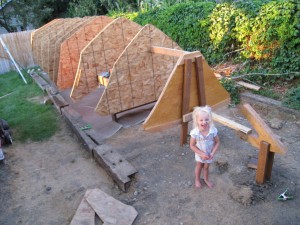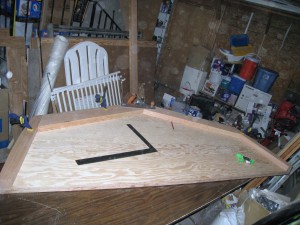After much work, the keel is finally in place. 4 layers of 1/2″ x 6″ Douglas-Fir from the back to the front and increasing to 8 layers(but tapering to only 4 inches wide) at the very front.
You can’t really buy 1/2×6 boards, So I got 2×6 stock and ripped them on edge to make 1/2″ x 6″. I was able to get three such boards from one 2×6, one of which was usually closer to 9/16 to 5/8. The larger boards were too much for me to handle with just a hand plane, so a special thanks to my neighbor Enoch, who let me use his thickness planer.
Here it is completed.
And now for the chines(goes the length of the boat between the bottom and the sides).









